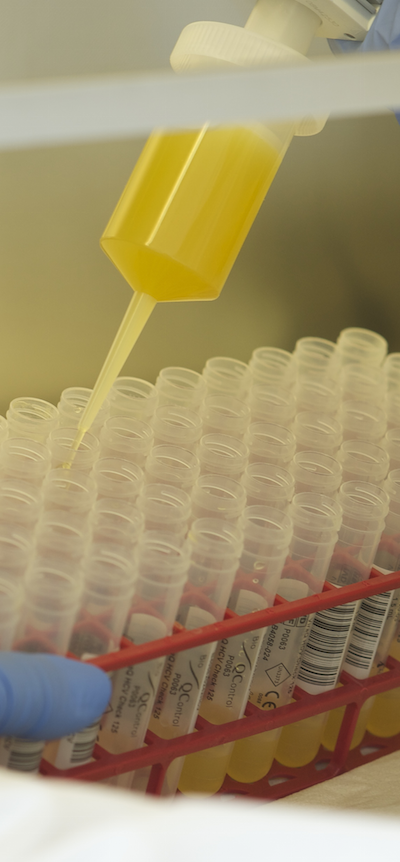CREATING CONFIDENCE
PRODUCT CATALOGUE
Our catalogue is divided up in different product groups for validation or quality control of infectious disease tests. The products have been primarily designed for blood screening laboratories but they are also suitable for diagnostic laboratories. Over the years our products have been used by blood centers, plasma fractionators, IVD manufacturers and hospital laboratories.
Twenty-five years standards and controls for viral serology and NAT
Since the early 1990s we have proven to produce consistent batches of reference panels and run controls from deep frozen viral standards. In the beginning our standard dilution panels were used in proficiency studies for viral serology and NAT. Later PeliCheck reference panels and PeliSpy run controls (prepared from the same standards) were widely used for validation and external quality control of IVDs. The reactivity on the first PeliSpy Controls produced in the mid1990s by VQC-Sanquin is still the same as on the currently produced BioQ Controls. No wonder, the same standards are still the foundation under these products.
Twenty-five years of data on our native and inactivated viral standards show the evolution of evermore sensitive NAT assays. Our viral standards for NAT have been extensively calibrated in IU/mL against the first WHO International Standards and were also carefully quantified in copies/mL using reference methods. For understanding blood safety we even compared our viral standards with chimpanzee plasma’s of known infectivity. An abundant amount of data on our standard dilution panels allowed for designing ViraQ run controls at close distance to the detection limits of the NAT methods.
The right positioning of run controls is key to being alerted when the analytical sensitivity of blood screening assays is significantly reduced. This functionality of BioQ controls can be guaranteed because the long term stability of our standards has been firmly established. Stability of reference samples is a first requisite of NAT standardisation.
